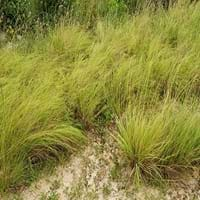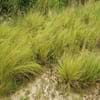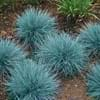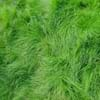Life Span
Perennial
Perennial
Origin
Eastern Africa, Southern Africa
China
Types
Robusta blue, Robusta green, Curvula
Actinidia deliciosa chlorocarpa, Actinidia deliciosa deliciosa
Habitat
Cultivated Beds
Mountain forests
USDA Hardiness Zone
7-13
6-9
AHS Heat Zone
12 - 10
9-7
Sunset Zone
4, 5, 6, 7, 8, 9, 10, 11, 12, 13, 14, 15, 16, 17, 18, 19, 20, 21, 22, 23, 24
4, 5, 6, 7, 8, 9, 12, 14, 15, 16, 17, 18, 19, 20, 21, 22, 23, 24
Habit
Clump-Forming
Vining/Climbing
Minimum Width
Not Available
Flower Color
Gray, Lavender
Light Yellow, Ivory
Flower Color Modifier
Bicolor
Bicolor
Fruit Color
Gray Green, Silver
Tan, Brown
Leaf Color in Spring
Green, Dark Green
Green, Light Green
Leaf Color in Summer
Light Green
Green
Leaf Color in Fall
Dark Green, Bronze
Light Green, Yellow green
Leaf Color in Winter
Yellow, Dark Green, Bronze
Light Green
Leaf Shape
Grass like
Heart-shaped
Plant Season
Summer, Fall, Winter
Spring, Summer, Fall
Sunlight
Full Sun
Full Sun, Partial Sun
Type of Soil
Loam, Sand
Clay, Loam
The pH of Soil
Acidic, Neutral, Alkaline
Acidic, Neutral
Soil Drainage
Well drained
Average
Bloom Time
Late Summer, Early Fall
Late Spring, Early Summer
Tolerances
Drought
Drought
Where to Plant?
Ground
Ground
How to Plant?
Seedlings
Layering, Softwood cuttings
Plant Maintenance
Medium
Medium
Watering Requirements
Average Water Needs
Water daily during growing season
In Summer
Lots of watering
Lots of watering
In Spring
Moderate
Moderate
In Winter
Average Water
Average Water
Soil pH
Acidic, Neutral, Alkaline
Acidic, Neutral
Soil Type
Loam, Sand
Clay, Loam
Soil Drainage Capacity
Well drained
Average
Sun Exposure
Full Sun
Full Sun, Partial Sun
Pruning
Cut back old stems to the ground
Prune for shortening long shoots, Prune in early summer, Prune in late winter
Fertilizers
Requires high amount of nitrogen
Self-fertile
Pests and Diseases
No serious insect or disease problems
Armillaria root rot, Armored scales, Bleeding canker, Botrytis Blight, Crown gall, Nematodes, Phytophthora Root Rot, Red blotch
Plant Tolerance
Drought
Drought
Flower Petal Number
Single
Single
Foliage Texture
Fine
Medium
Foliage Sheen
Matte
Matte
Attracts
Not Available
Not Available
Allergy
conjunctivitis, Pollen
Inflammation, Mouth itching, Throat itching
Aesthetic Uses
Borders, Showy Purposes
Not Used For Aesthetic Purpose
Beauty Benefits
Not Available
Beautiful Skin, Protects from sun damage
Environmental Uses
Erosion control
Air purification
Medicinal Uses
No Medicinal Use
constipation, Heart problems, Low Blood Pressure
Part of Plant Used
Leaves, Seeds
Fruits
Other Uses
Used as a grain, Used to make baskets, brooms, hats
Used As Food, Used for its medicinal properties
Used As Indoor Plant
No
No
Used As Outdoor Plant
Yes
Yes
Garden Design
Bedding Plant, Container, Edging, Groundcover, Mixed Border, Rock Garden / Wall
Edible, Fruit / Fruit Tree, Rock Garden / Wall, Vine
Botanical Name
ERAGROSTIS curvula
ACTINIDIA deliciosa
Common Name
Weeping Lovegrass
Chinese Gooseberry, Fuzzy Kiwi, Kiwi
In Hindi
Weeping Lovegrass
कीवी फल
In German
Weinend lovegrass
Kiwi, Chinesischer Strahlengriffel
In French
Weeping lovegrass
Kiwi, Groseille de Chine, Yang Tao, Souris végétale
In Spanish
Pasto llorón
kiwi, kivi, actinidia
In Greek
κλάμα Lovegrass
Ακτινίδια
In Portuguese
chorando lovegrass
Quiuí
In Polish
Płacząca Lovegrass
Owoc kiwi
In Latin
Plorans Lovegrass
Kiwi fructum
Phylum
Magnoliophyta
Magnoliophyta
Class
Liliopsida
Magnoliopsida
Family
Poaceae
Actinidiaceae
Genus
Eragrostis
Actinidia
Clade
Angiosperms, Commelinids, Monocots
Angiosperms, Asterids, Eudicots
Tribe
Eragrostideae
Not Available
Subfamily
Chloridoideae
Not Available
Number of Species
Not Available
Importance of Weeping Lovegrass and Kiwifruit
Want to have the most appropriate plant for your garden? You might want to know the importance of Weeping Lovegrass and Kiwifruit. Basically, these two plants vary in many aspects. Compare Weeping Lovegrass and Kiwifruit as they differ in many characteristics such as their life, care, benefits, facts, etc. Every gardener must at least have the slightest clue about the plants he wants to plant in his garden. Compare their benefits, which differ in many ways like facts and uses. The medicinal use of Weeping Lovegrass is No Medicinal Use whereas of Kiwifruit is constipation, Heart problems and Low Blood Pressure. Weeping Lovegrass has beauty benefits as follows: Not Available while Kiwifruit has beauty benefits as follows: Not Available.
Compare Facts of Weeping Lovegrass vs Kiwifruit
How to choose the best garden plant for your garden depending upon its facts? Here garden plant comparison will help you to solve this query. Compare the facts of Weeping Lovegrass vs Kiwifruit and know which one to choose. As garden plants have benefits and other uses, allergy is also a major drawback of plants for some people. Allergic reactions of Weeping Lovegrass are conjunctivitis and Pollen whereas of Kiwifruit have Inflammation, Mouth itching and Throat itching respectively. Having a fruit bearing plant in your garden can be a plus point of your garden. Weeping Lovegrass has no showy fruits and Kiwifruit has no showy fruits. Also Weeping Lovegrass is not flowering and Kiwifruit is not flowering . You can compare Weeping Lovegrass and Kiwifruit facts and facts of other plants too.





